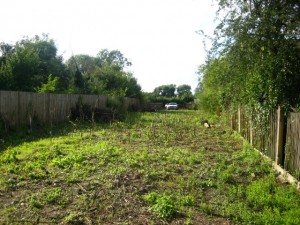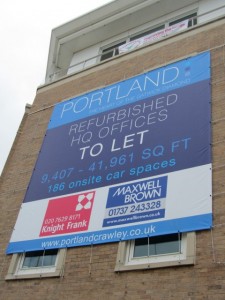FEATURE ARTICLE:Finding and maximising development opportunities |
|
Commercial property opportunities exist across the country but the challenge for many developers is finding these opportunities and then drawing up strategies to maximise the return on investment whether it is a greenfield or brownfield site, a conversion, refurbishment or a new build.
|
|
Finding development opportunitiesWe thought it would be useful to discuss, in this article, about how our developer clients and contacts find sites. Often developers ask whether we know of any sites that could be acquired for development and so we have included some of the skillls we have used ourselves. We are more than happy to help. Researching your local market, niche or area of particular skill in terms of development is an important first step to ensuring you find out about potential opportunities. There is a wealth of information available on the Internet including online databanks such as www.propex.co.uk and subscription services like www.egi.co.uk. Local Authorities can also be a good source of information. You could also look through auction lists prior to sale day and approach sellers direct. Local knowledge can also be updated and added to by keeping in contact with agents, surveyors, architects, contractors and other developers and investors in your area. It is these personal networks through which many people gather information, intelligence and insight. As well as the people mentioned above you can also find new contacts through social media, for example LinkedIn has a range of property development groups, which you view here. Events are also a useful source of new contacts and are often run by membership organisations such as the British Property Federation. One key aspect that is becoming more common when trying to find development opportunities, whether you are researching the market, building your local knowledge, contacts, networks or overall insight, is the sharing of information. Social media is underpinned by the notion of sharing information, but so are more traditional forms of gaining knowledge like events and membership of associations and so on. Moreover, the sharing of information within your close-knit network of contacts should be encouraged and we certainly play our part are far as that is concerned. Word of mouth is a frequent source of finding land opportunities and, once the plot of land has been visited, finding the owner is the next step. The Land Registry provides an easy-to-use and inexpensive online service to enquire about the ownership of land. With owner details in hand, the process of making contact can begin. We know of cases where the owners have been willing to sell the land without protracted negotiations. One final aspect of finding development opportunities that we feel is important is to think laterally. Perhaps there are sites that have been overlooked, that pose too many problems for others or that initially don’t appear to offer a good return. By thinking laterally, and by working with others to help you, it is possible to achieve good returns from less obvious sites. |

|
Maximising your returnWhen you have found a potential site it is critical to carry out a development appraisal. These vary in their complexity but could include sections looking at the size and condition of the land or existing property, adjacent development profile, transport availability and requirements (including parking), future growth of the area, all relevant planning policy, tenant profiling, market demand analysis and perhaps most importantly strategies for adding value. LocationThe location of a site is one of the most important factors in determining whether a development will be successful. It will directly affect which tenants or investors a developer will target, the passing rent or sale price one complete. The condition of adjacent development is a factor as is the availability of transport. Occupiers may need to drive to and from the development if transport links are poor and so parking availability becomes a more important factor. Surrounding development may influence the exterior design and the finish of a development in order that your building is in tune with, or trumps, local competition depending on your strategy. Secondary or even tertiary locations should not be dismissed as long as there are other contributing factors that will make the development attractive, for example future growth of the immediate vicinity. Local Authority planning policy may influence growth so it is critical to be fully aware of this at all times. The location might be the first choice to be made when looking for a successful development opportunity. However, to maximise a sites potential one should consider any future prospects of the area that the site is situated. |
|
Future growthIt is almost a definite that over the life of a site the attractiveness of its location is likely to change through factors such as the development of the surrounding area, or the nature of local business activity. Development opportunities in rundown areas with detailed future growth plans could provide larger returns than a site in an established area, therefore determining whether a site will give you the return that you require will be whether you are focusing on the long or short term. |
Top |
City centre vs. Out of townCity or town centre locations invariably involve works on a brownfield site, which often results in demolition or conversions of older existing building. The location advantage to this type of development is that it is generally closer to existing transport networks giving improved flexibility to the end users commuting from distant locations, or car free options to those who reside close by. The general advantage to an out of town location is the proximity to major trunk roads, giving end users quick car access, although this is often at the detriment to the local amenities often required by an end user. Over the years and due to relaxations in planning policies many business parks have diversified to provide more mixed-use facilities and amenities in an attempt to attract new investment. This strategy is set to increase with proposals at some business parks to introduce residential development and wider retail uses, and to expand the employment opportunities to include both general industry (B2) and distribution uses (B8). It would seem that the business park is trying to transform itself into an inner city location by bringing the community to it. Tenant or investor profilingThe type of tenants or purchasers you wish to target will also be a key factor in location choice. In fact it may be the sole determining factor. For example, you may only look for out town locations if your potential tenant is a distribution company. You may only look at very large sites to attract a multinational tenant. |
 |
| Top | |
Adding value to the siteOnce you have found a development site and the location, future growth potential, tenant profiling and demand analysis have been done the next stage is to look at strategies to add value. We have included a number of ways to add value below, touching on each one briefly. We plan to revisit these in future articles in much more detail and we have also included links to relevant past articles we have written. Gaining planning permission is as much about adding value as it’s about being able to develop your site in the way you need to. Many developers sell on sites once planning has been granted and the cost-benefit calculations can really add up. The return you could get from a development site should be based on the most valuable alternative use of a site, rather than the highest value that could be obtained for its current use. And so a possible change of use should be included in any strategy. Legislation recently changed regarding change of use from commercial property to residential and you can find our article on this subject here. Last month our article focused on increasing the nett lettable floor area of commercial property. You can read it by clicking here. There is a whole range of options to achieving this. Introducing an element of flexibility into your development such as the ability to sub-divide can add value. This makes the completed building attractive to a wider range of tenants, multiple tenants and a potentially different set of investors. Installing facilities such as bike parks, security and improved reception areas, can increase the passing rent per square foot and therefore the overall value of the development. Adding value to your development site does not necessarily have to cost significant sums. To us it is more about thinking laterally to use the space, existing buildings or other assets and features that your development site has in the more creative and effective way.
|
|
How we can helpOur knowledge and experience at Harvey Wright Architects allows us to create strategies for potential land and buildings, review local planning policies, and undertake appeals and planning inquiries as necessary, carry our feasibility studies for a range of different uses and layouts to maximise value and put together complete consultant teams to give an overall assessment of a scheme, and ultimately deliver the results. |
Top |
Further reading |
|
| If you would like us to contact you regarding a project, please click here & complete the form | Top |